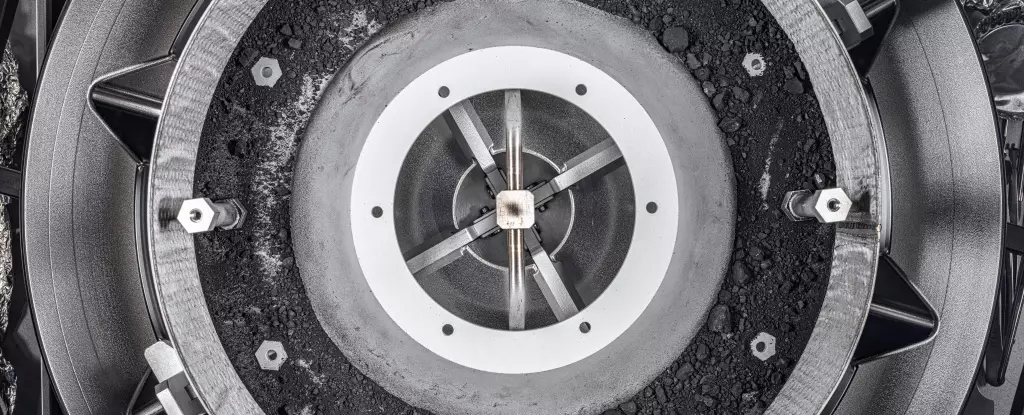After months of anticipation, NASA has finally unveiled the first high-resolution images of the contents of its Bennu asteroid sampler container. These images provide a fascinating glimpse into the black dust and rocks, some up to 1 cm in size, that have remained untouched for an estimated 4.5 billion years. As scientists continue to study the material, it is hoped that valuable insights into the origins of our Solar System will be revealed.
The journey of extracting the asteroid material from Bennu has not been without its challenges. On September 24, during OSIRIS-REx’s flyby of Earth, a portion of the sample was successfully dropped off. However, the main TAGSAM head, which contained the majority of the sample, remained stubbornly sealed. It was not until January 10 that the team managed to open the final fasteners, granting access to approximately 70 grams (2.48 ounces) of asteroid dust.
Achieving Super High-Resolution
Following the successful removal of the fasteners, the @astromaterials team had the opportunity to photograph the asteroid sample with a special technique that achieved super high-resolution images. These images, taken by Erika Blumenfeld and Joe Aebersold from the Advanced Imaging and Visualization of Astromaterials (AIVA) project, offer an incredibly detailed view of the precious contents.
With the TAGSAM head now open, the team’s focus shifts to the next stages of the process. Their immediate task is to remove the round metal collar, as seen in the image, and prepare for the transfer of the remaining sample into pie-wedge sample trays. These trays will then be meticulously documented through photography, weighed, packed, and ultimately stored at NASA’s Johnson Space Center in Houston.
A Treasure for the Scientific Community
Once a comprehensive catalog of Bennu samples is released later this year, scientists worldwide will have the opportunity to request access for display or research purposes. It is worth noting that a significant 75 percent of the sample will be stored for future analysis, ensuring that this invaluable material remains available for generations to come.
Astrobiologist Dante Lauretta, from the University of Arizona Lunar and Planetary Laboratory, reflects on the significance of this achievement: “Finally having the TAGSAM head open and full access to the returned Bennu samples is a monumental achievement that reflects the unwavering dedication and ingenuity of our team… We eagerly anticipate the next chapter as we share these precious samples with the global scientific community and continue our journey of discovery.”
OSIRIS-APEX: Towards New Asteroidal Encounters
As the OSIRIS-REx mission progresses, it has now been renamed OSIRIS-APEX and is en route to investigate another asteroid named Apophis. This potentially hazardous object will be the focus of the spacecraft’s next rendezvous, set to take place in 2029. The knowledge gained from studying Apophis and its composition will undoubtedly contribute to our understanding of asteroids and their potential impact on Earth.
The unveiling of the Bennu asteroid sampler’s contents marks a significant milestone in our quest to unravel the mysteries of our Solar System. The precious material captured from the ancient asteroid holds the promise of discoveries that could revolutionize our understanding of how our celestial neighborhood came into existence. As scientists meticulously analyze and share these invaluable samples, we can look forward to new insights and a deeper appreciation for the wonders of our universe.


Leave a Reply